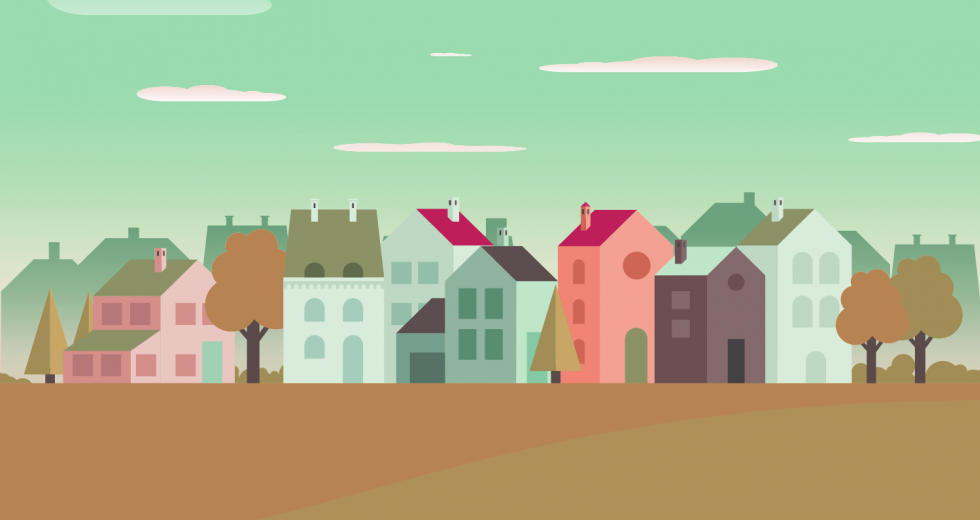The suburbs have long served as a symbol of opportunity in California, where families could realize the ‘American Dream’ of homeownership, expansive lawns and ample parking. But for many, suburban growth has instead been synonymous with racial and economic segregation, nightmare commutes and environmental degradation. As suburban housing development rebounds post-recession and these communities are leaned upon to help alleviate the state’s chronic housing shortage, California’s suburbs find themselves at a crossroads: Continue historic patterns of unsustainable and inequitable growth, or chart a course toward more inclusive and dynamic communities that are true to their symbolic legacy while serving a variety of residents.
Related: Your former bedroom community isn’t just for sleeping anymore
Related:The Great Millennial Migration
How did we get to this crossroads? After years of historic lows in homebuilding, residents across the Golden State are increasingly faced with rising rents, soaring home prices and displacement pressures. Though this has been the reality for many of California’s coastal cities for several years, places like the Sacramento region are now increasingly feeling these same effects.
It would appear the solution is simple: Build more housing, everywhere. But in practice, this solution is more complex to implement and requires a nuanced approach. In urban centers, for example, homebuilding is costly, time-consuming, and wrought with legal and political challenges — all which limit the amount and type of housing that can be built in these areas. And while increasingly appealing among many demographics, dense urban cores cannot be the only place where more houses get built.
On the other hand, suburban home development offers fewer impediments and more affordable land. As a result, suburban construction is rebounding strongly from the recession, with many jurisdictions returning to 2008 levels of production. This is fueling significant jumps in population in places like Rocklin, Elk Grove, Folsom and Roseville.
While more housing is certainly encouraging, special attention should be paid to the type and location of this new home growth, as not all housing is created equal. Sprawling, single family homes in locales far from job centers add supply overall, but may also exacerbate certain environmental and socioeconomic issues while creating untenable commutes for all.
To that end, we return to the choice facing suburbs today: Continue the growth patterns of the past — unmitigated, auto-dependent outward expansion of exclusively single family homes with no transit access — or respond to the growing demand for vibrant, inclusive and complete communities with a range of housing and transportation options. The latter can be achieved with creative and sensible policies, such as the facilitation of more “missing middle” housing affordable to younger residents through innovative zoning and land use changes. Housing types such as townhomes, duplexes and triplexes can add relatively affordable supply to a block of single family homes without dramatically altering neighborhood character.
Promoting accessory dwelling units or “granny flats” is another promising strategy. These units have spiked in popularity in larger cities thanks to recent state legislation, allowing homeowners to build onsite units for their family members, or earn a bit of income by renting out their additional unit. But ADU growth is still nascent in suburban areas, which oftentimes are dominated by homeowner associations that resist this housing type, or planning departments that continue to require unreasonable lot sizes or designs.
And the suburbs can also say yes to transit as increasingly absurd driving commutes and their high costs can oftentimes consume any savings realized by cheaper homes, not to mention severely reduce the quality of life for drivers.
“California’s housing challenges will not be solved by increased building solely in the urban centers — building in suburban communities is just as significant,”
Some Sacramento suburbs are already on the right track. For example, Roseville has built a substantial amount of small lot development, and Folsom is also building a significant amount of mixed housing, building more small lot homes than large lot homes over the past four years. On the transportation side, Elk Grove has recently considered a new hub that would link together Amtrak, the Altamont Corridor Express and potentially, a light rail extension. These are good examples of Sacramento suburbs thinking proactively to serve the diverse needs of the region, an increasingly important consideration given the rising socioeconomic diversity of suburban communities.
California’s housing challenges will not be solved by increased building solely in the urban centers. Building in suburban communities is just as significant, if not more so. But the way in which suburbs build is incredibly important. Rather than continuing the decades long trend of creating single family homes, automobile dependence and mega commutes, forward-thinking suburbs will respond to the housing crisis by facilitating growth in housing for families of all income levels and welcoming new transportation connections to ensure cars are not the only way to access jobs and opportunity. Thankfully, we’ve seen a handful of communities move in this direction. Hopefully, more will follow suit.




Comments
This proposed approach to solving the housing crisis has puzzled me since it appeared at Citylabs recently. The justification for building in the suburbs being that it's too hard to build in urban cores. But this ignores the fact that suburbs are even more opposed to residential construction than our cities are, that their transportation infrastructure are even less configured to cope with the added people (In LA, SF and NYC, Public Transit use is actually down from its highs in the mid to late 20th century so there actually a lot of potential spare capacity.), except for the exburbs construction costs are no lower, and most importantly, when given a choose, people are choosing not to live in them. Given this array of reasons for not building there, it's puzzling to see the way in which interest in this idea continues to grow and spread.